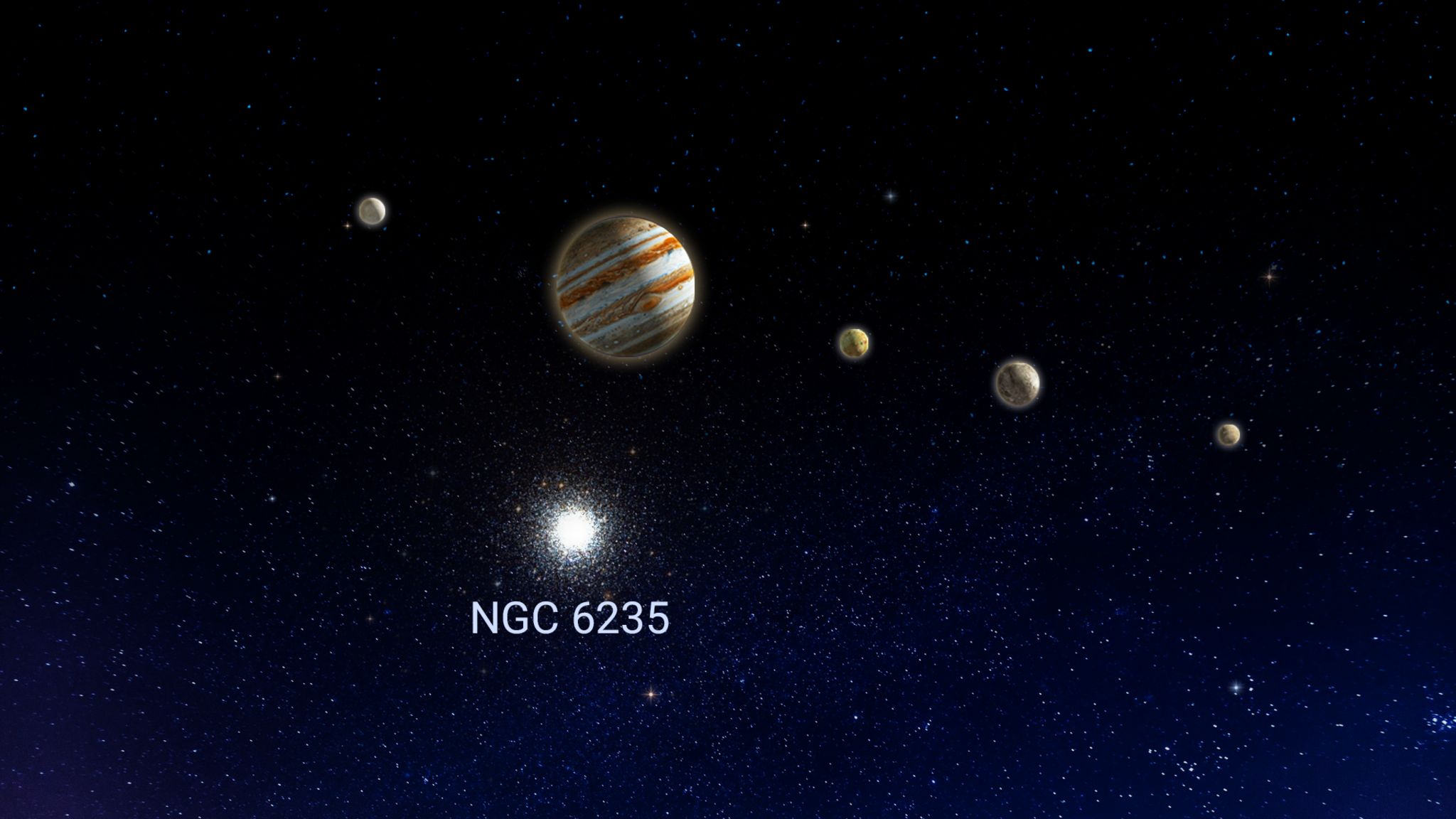Look at Jupiter this week
Jupiter is the extremely bright, white object shining in the southern evening sky. Even a backyard telescope can show Jupiter’s two main equatorial stripes and the four Galilean moons named Io, Europa, Callisto, and Ganymede. The moons always form a rough line flanking the planet. If you see fewer than four, then some are either in front of Jupiter or hidden behind it.
Jupiter will do something interesting this week, and then it will repeat it a month from now! On the evenings surrounding Friday, July 26, Jupiter’s orbital motion will carry it close past a globular star cluster designated NGC 6235, which is located in the southern sky in the constellation of Ophiuchus. At closest approach on July 26, the bright planet will sit only 4 arc-minutes above the cluster. For comparison purposes, the full moon is 30 arc-minutes across.
That star cluster is located about 38,000 light-years away, while Jupiter will only be 38 light-minutes from Earth! Both objects will fit within the field of view of a backyard telescope at medium power. To better see the dim, fuzzy globular cluster, try placing the bright planet just outside your field of view.
From time to time, the small, round black shadows cast by the Galilean moons become visible in amateur telescopes as they cross Jupiter’s disk. On Tuesday night, Europa’s small shadow will be transiting the northern part of Jupiter from 11:45 pm to 2 am EDT. On Wednesday night, Ganymede’s larger shadow will be transiting the northern part of Jupiter from 11:30 pm to 1:45 am EDT. On Saturday, July 27, Io’s small shadow will cross from 10:50 pm to 1 am EDT, with the Great Red Spot joining the fun after 11:45 pm.
Speaking of the spot, due to Jupiter’s rapid 10-hour rotation period, the Great Red Spot (or GRS) is only observable from Earth every 2nd or 3rd night, and only during a predictable three-hour window. The GRS will be easiest to see using a medium-sized, or larger, aperture telescope on an evening of good seeing. If you’d like to see the Great Red Spot in your telescope, it will be crossing the planet on Tuesday evening from 8:30 to 11:30 pm EDT and on Thursday night from 10:15 pm to 1:15 am EDT.



